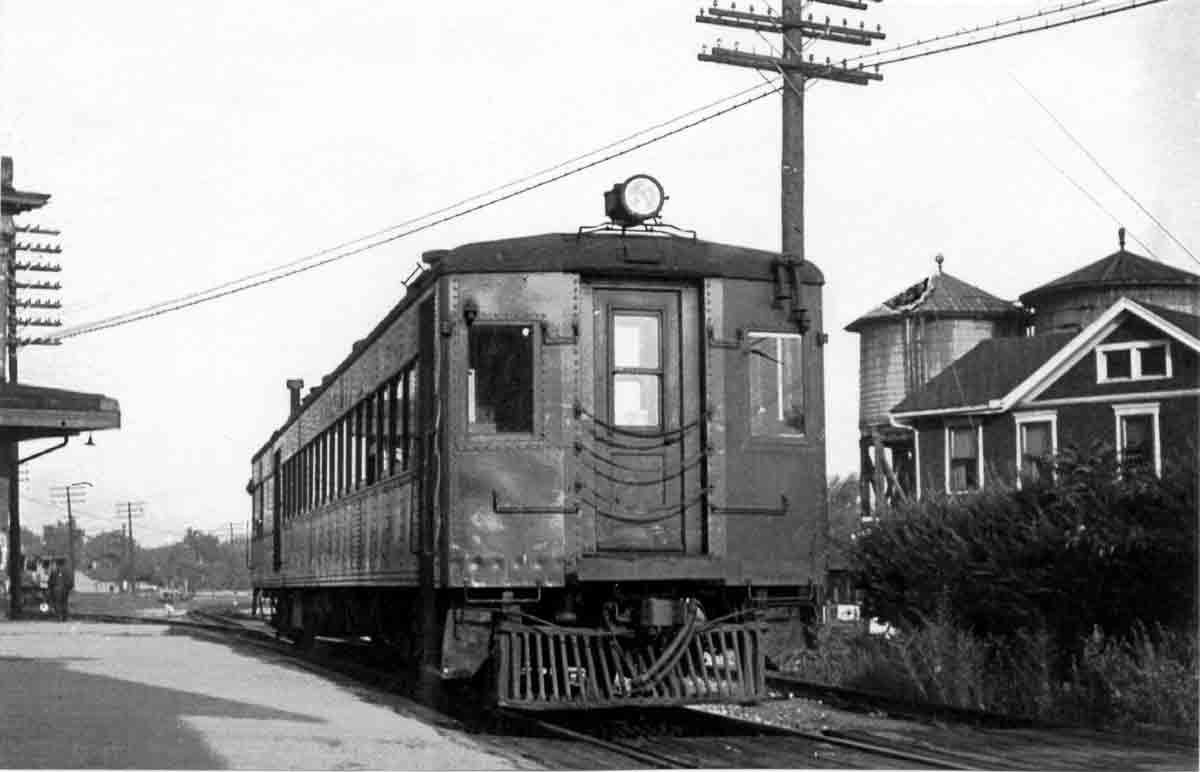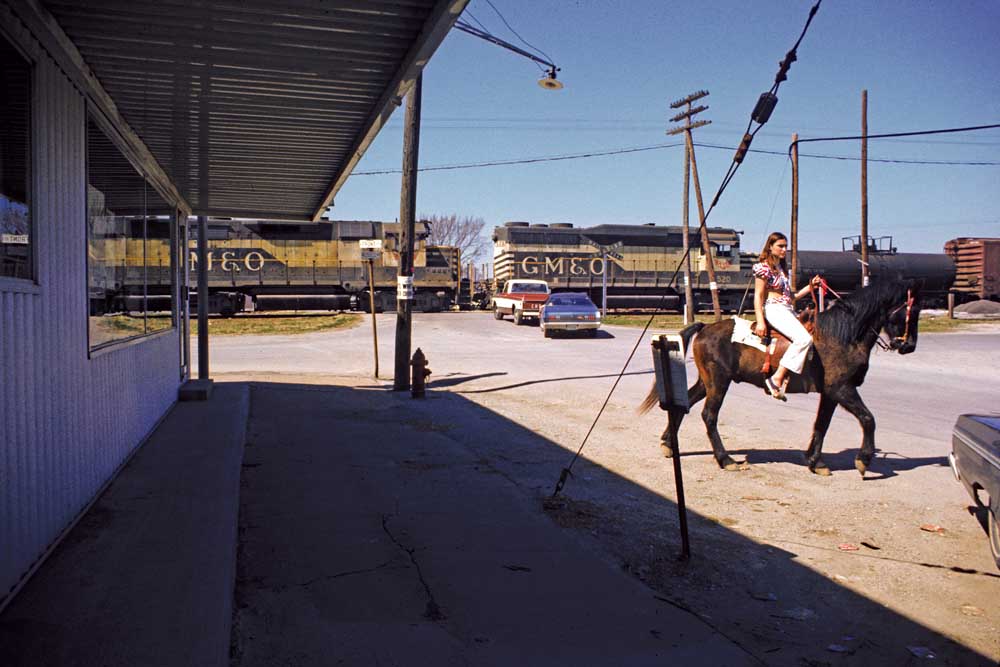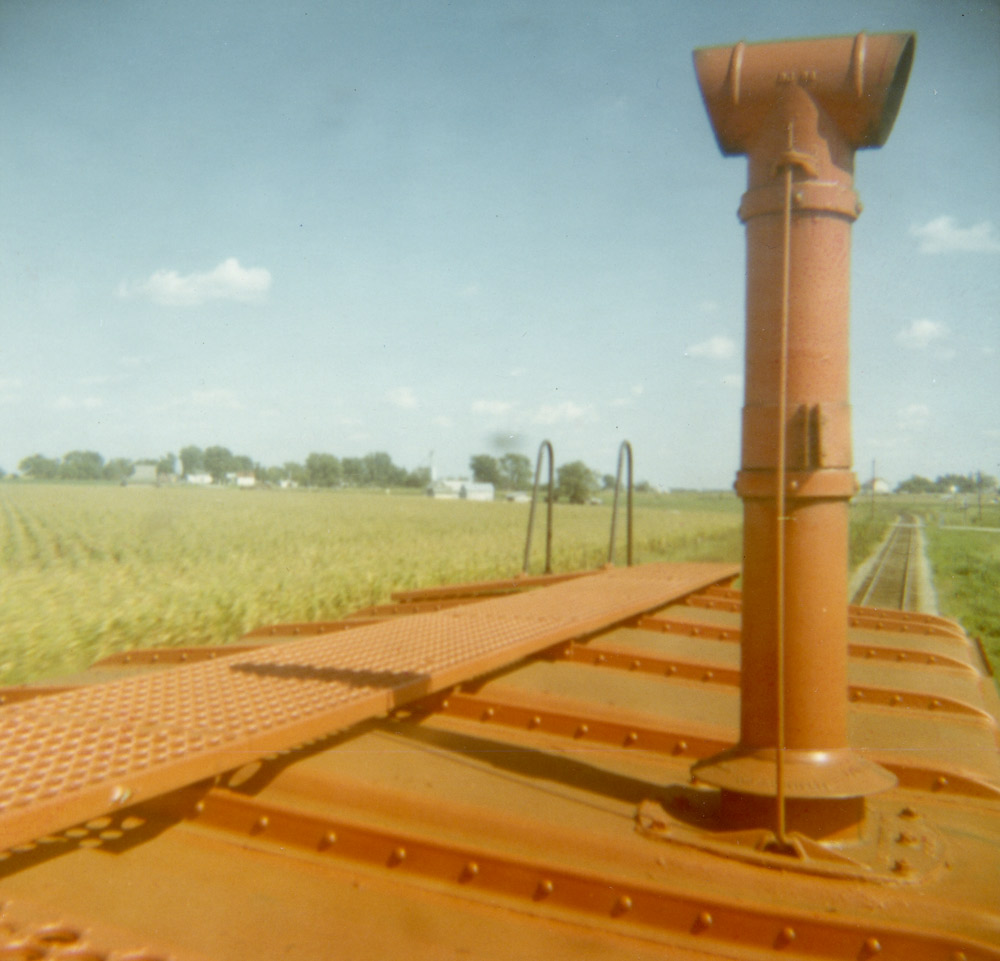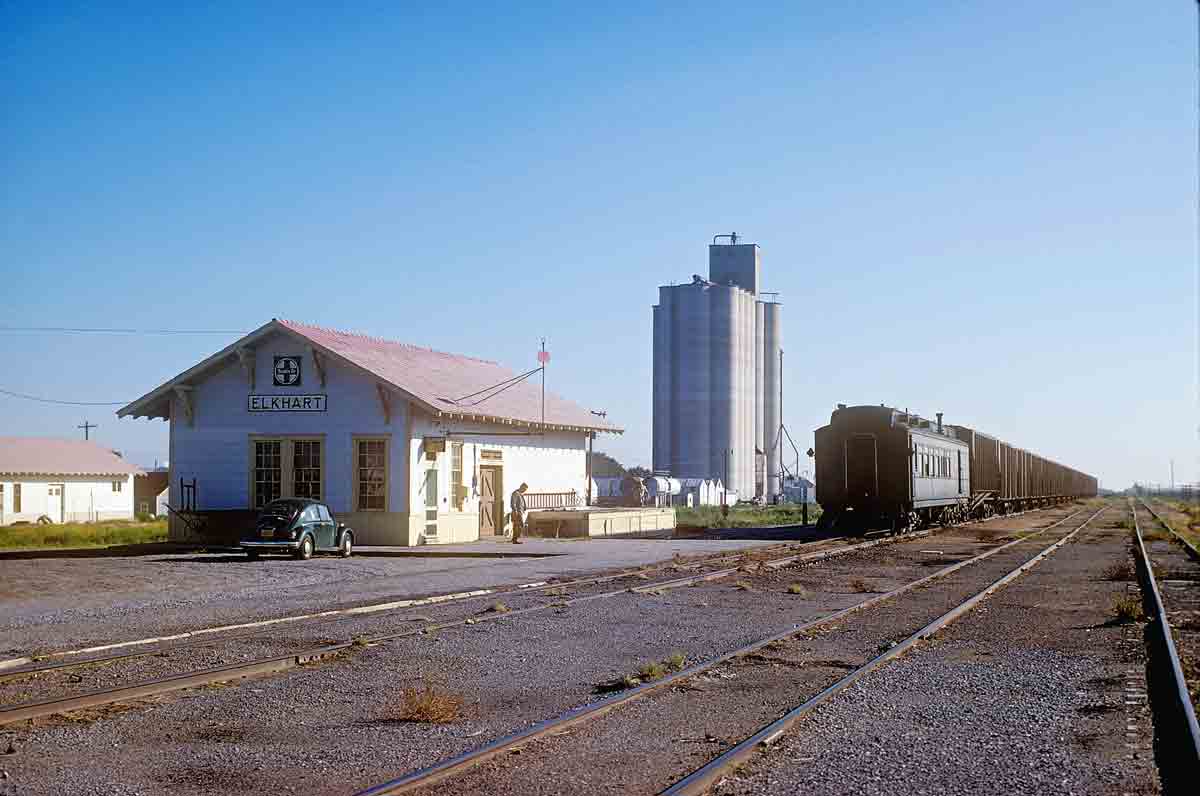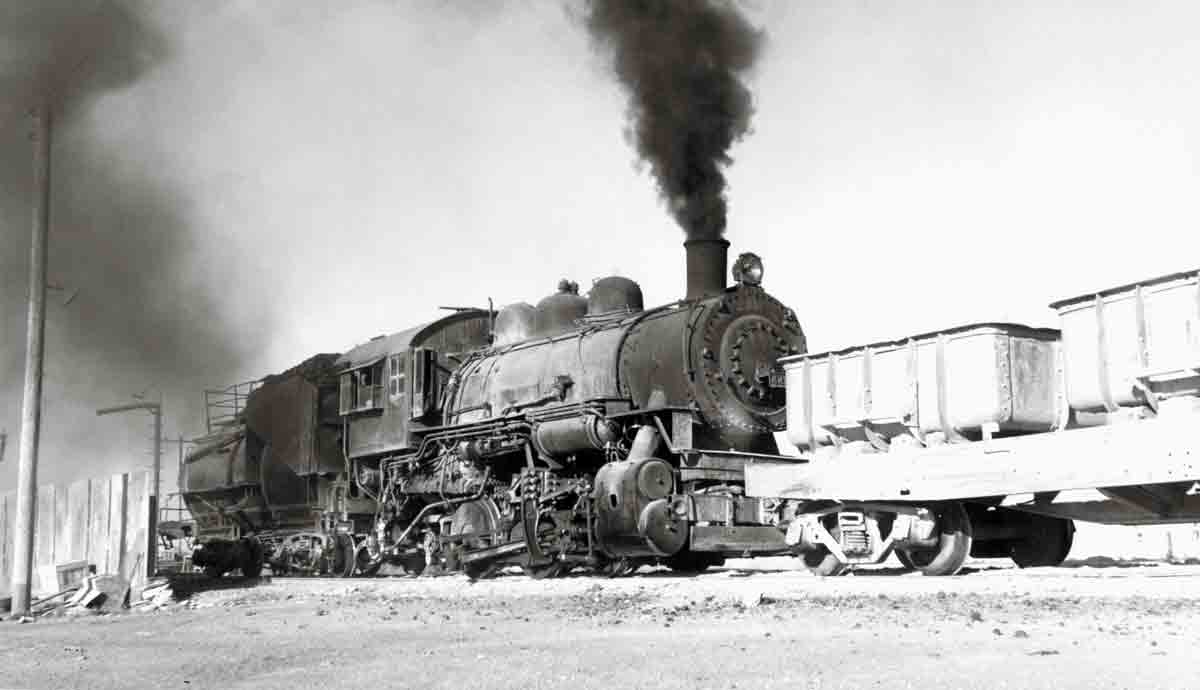Our trip started in mid-morning as a small contingent of people boarded the car at Xenia’s old PRR station. We left on time and proceeded slowly north across Shawnee Creek, past Eavey’s big grocery warehouse and through the tree-lined streets of Xenia. The car had controls at both ends; for the trip north, the passenger compartment was leading. We left the street-running and went to private right of way north of the courthouse and picked up speed after passing the city limits at Kinsey Road crossing (near where I live today).
We crossed over the Little Miami River on a through-truss bridge south of Goes Station and then passed ruins of the old gunpowder mill, which had long since moved south to King’s Mills, northeast of Cincinnati. After a mid- trip pause at Yellow Springs, the train continued north to Springfield, the end of the 19.2-mile branch line.
In downtown Springfield, the track just ended in the middle of a street, one block south of the Big Four (New York Central) passenger station. Dad posed the crew (conductor, engineer, and brakeman) in front of the car so I could snap a picture. Relatives have since identified the engineer as Ben Stouff and the conductor as Edward W. Shultz.
After a two-hour layover, and lunch at a local diner, Dad and I reboarded for the return trip. There was just the crew and us two paying passengers, so we got to ride up front with the engineer, next to the two small diesel engines that powered the car. What an unexpected treat! The engines roared to life, the train began to move, and we then proceeded south out of Springfield and back to Xenia without further interruption. As I recall, track speed was in the range of 25-35 mph.
As we approached Kinsey Road on the outskirts of Xenia again, the engineer slowed and tossed his red-and-white “last-run” cap out the open window to a friend who was standing trackside. When he throttled up, the higher current caused a wire burn through on one of the two diesel-electric power plants, so it was quickly shut down. We had to continue slowly on just one engine, through town and back to the station.
No big crowd was waiting. No one to congratulate the crew. To most, this was just another everyday event. Dad and I got off and thanked everyone and headed home with cameras and pleasant memories.
Freight service on the Pennsylvania’s Springfield branch continued until spring 1967. Although I then lived north of Xenia, and could spot the trains through some trees, I paid little attention to what was happening. I only became fully aware of the line’s demise after the tracks and a bridge over our road were removed. At least the right of way has been preserved as a bike trail. The other rail lines through downtown Xenia quickly followed suit and were all gone by 1986. In fact, the only remaining railroad in Greene County is a single track through the northwest corner. Formerly Conrail and before it Penn Central, NYC, and Big Four, it now is owned by Norfolk Southern and is used jointly by the Indiana & Ohio, a regional carrier owned by Rail America.
I now take peaceful bike rides through tunnels of trees, along lazy streams, and beside bountiful fields. But I miss the sounds of the clacking wheels on the rail joints and the gentle rolling motion of the train as it followed the easy curves and gentle grades of the branch, when I rode the last train to Springfield and back.
First published in Fall 2008 Classic Trains magazine.
Learn more about railroad history by signing up for the Classic Trains e-mail newsletter. It’s a free monthly e-mail devoted to the golden years of railroading.





